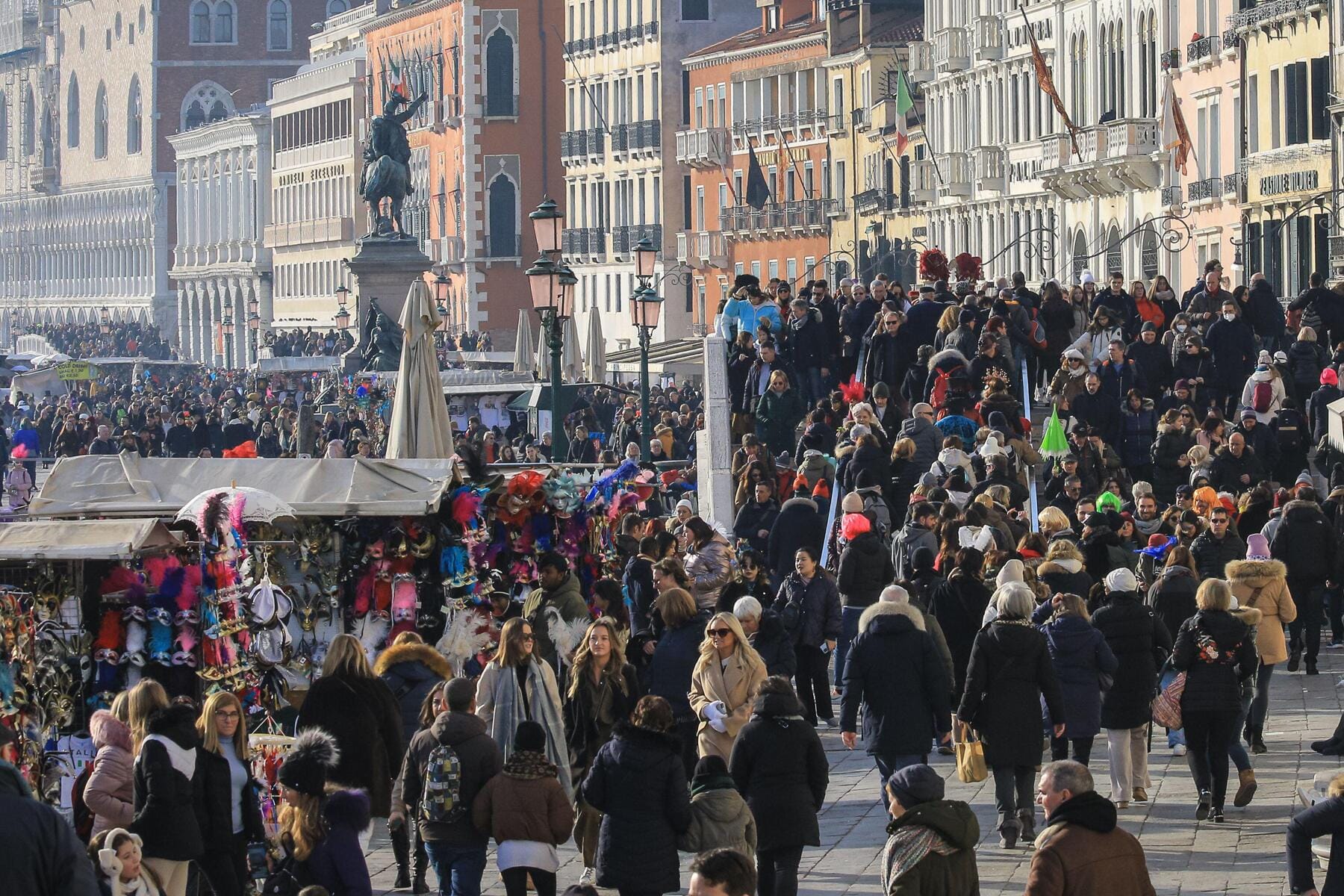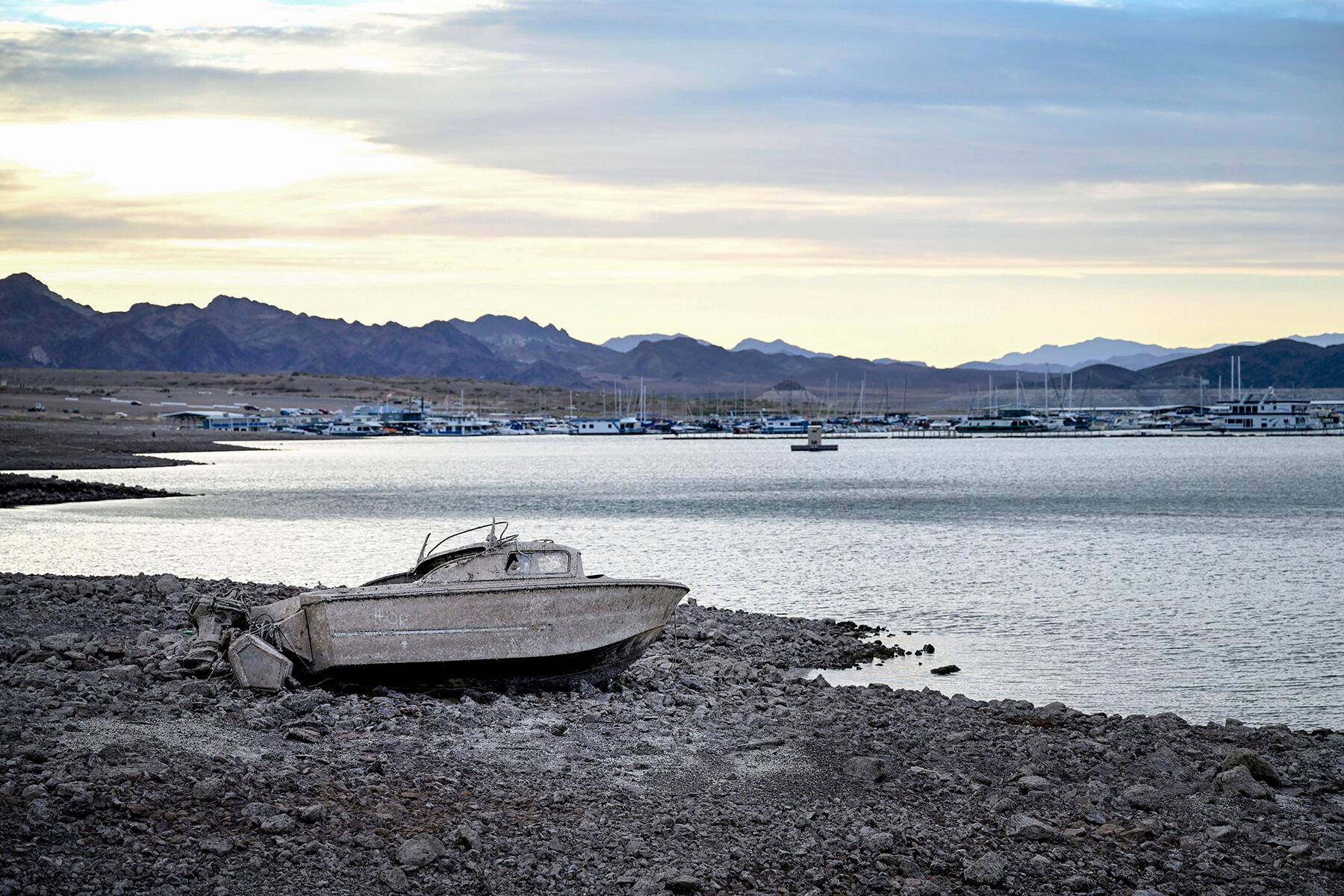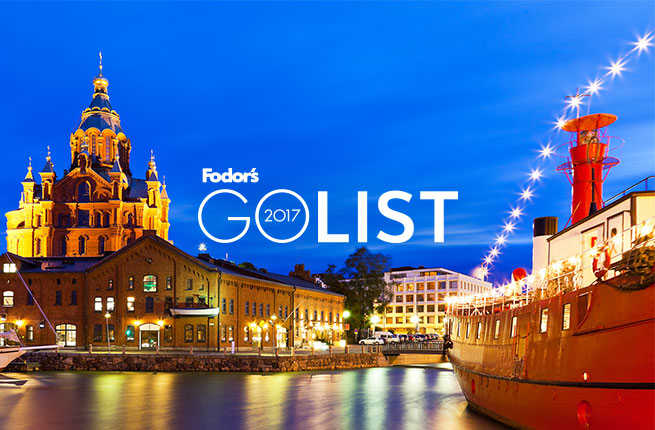
Each year, the team at Fodor’s puts together a definitive list of where to travel next. This year, our seventh annual ranking includes buzzy cultural happenings, hip cities, and off-the-beaten-path destinations that spark the imagination. Immerse yourself in nature at Canada’s National Parks, discover Scandinavian cool in Helsinki, and indulge in local cuisine in Chiang Mai. Even if you can't make it to any of these places, the important thing is to travel. 2017 could shape up to be a thorny year, so practice self-care and indulge in your vacation days. From natural wonders to up-and-coming hot spots, here are 25 places to inspire you to travel in 2017.
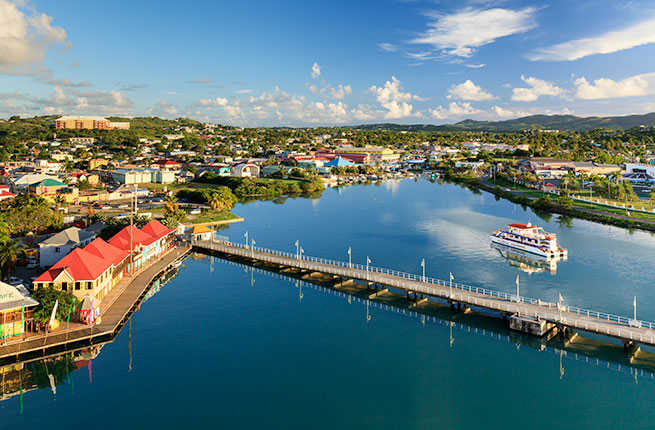
Antigua
The Caribbean headquarters of then-Captain Horatio Nelson offers a freshly minted UNESCO World Heritage Site and stunning beaches for yachtsmen and landlubbers alike.
With a recent airport overhaul, strategic location, and new UNESCO World Heritage Site—the exquisite walled Georgian-style Naval Dockyard (AKA Nelson’s Dockyard)—Antigua has positioned itself as a fantastic base for Caribbean exploration. It's a fine scenic “entry-level” destination for travelers seeking the quintessential beach experience with minimal hassle (English-speaking, U.S. dollars accepted, plentiful nonstop flights from the East Coast, duty-free shopping galore). Antigua is also increasingly embracing sustainable tourism, given the islets tossed like dice from a gambler's hot hand off its east coast and many beautiful beaches (one for every day of the year, as the ads boast).
Where to Stay: Antigua offers accommodations to fit most budgets, from small inns to condo resorts to all-inclusives, with several more properties slated to open in 2017. Stay within the UNESCO complex at the venerable yet modernized Admiral's Inn (fondly dubbed The Ads), where Nelson and his crew reputedly frequented the weathered wooden bar. In the “if luxe could kill” category, the island offers two smashing all-inclusive properties with white-glove service and splendid cuisine, Jumby Bay and Curtain Bluff.
Insider Tip: Consider taking a puddle-jumper or bumpy ferry ride to Antigua’s blissfully untrammeled sister island, Barbuda, a throwback to the old-time Caribbean that resembles one glorious beach ringed with pyrotechnic reefs. (Go now before major development takes hold: Even Robert DeNiro is associated with a project.) Or visit neighboring Montserrat, which remains a fascinating eco-destination where you can hike, scuba dive, lime, visit the ruins of former capital Plymouth (a latter-day Pompeii), and learn about the damage wrought by the Soufrière at the world-class Montserrat Volcano Observatory.
When to Go: Peak season follows the general Caribbean model: mid-December through mid-April. June through November is the official hurricane period; the most devastating storms usually fall in August and September. Prices drop as much as 40% during the less active shoulder months of May, October, and November. Note that many restaurants and shops around the Dockyard in English and Falmouth Harbours, which cater to yachters, close from June to mid-October.
PLAN YOUR TRIP: Visit Fodor’s Caribbean Travel Guide
—Jordan Simon
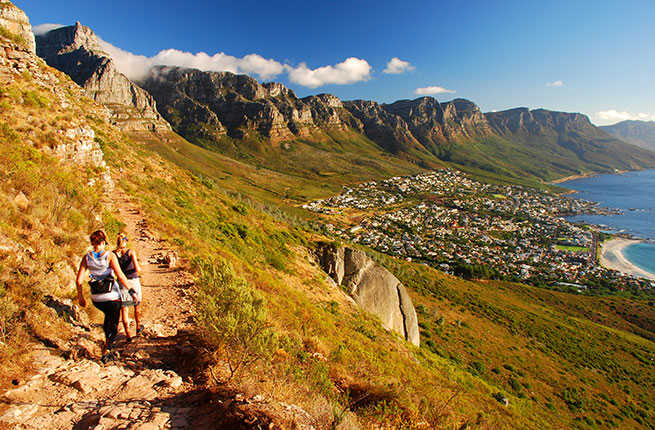
Cape Town
A cultural renaissance is under way in South Africa’s Mother City.
When apartheid ended in 1994, Cape Town—and the rest of South Africa—descended into a severe identity crisis; it seemed no one wanted anything to do with their own heritage. Since then, South Africans have slowly come to terms with the past, following Nelson Mandela’s commitment to reconciliation and forgiveness. A renewed appreciation of Cape Town’s diverse cultures and traditions is fueling a cultural renaissance, reflected in its cuisine and arts. Take, for example, the opening of the Zeitz Museum of Contemporary Art Africa in September 2017; destined to be Africa’s largest contemporary art museum, it’s already been dubbed one of the world’s most influential art museums by CNN. Top that off with its spectacular natural setting in the shadow of Table Mountain, vineyards less than an hour away, and a weak rand (sorry, Capetonians – but it’s great for the rest of us) and Cape Town is fast becoming one of the world’s top destinations.
Where to Stay: Cape Heritage Hotel in the Central Business District occupies two beautifully restored 18th-century buildings and is perfectly situated in trendy Heritage Square. Even if you don’t stay at the Belmond Mount Nelson Hotel, it’s worth stopping by this colonial-era grande dame for afternoon tea.
Insider Tip: Join Capetonians in their Saturday morning ritual: go on a hike (perhaps up Table Mountain or Lion’s Head), then head to a market (Woodstock’s Neighbourgoods Market in the Old Biscuit Mill is a foodie legend).
When to Go: The best weather is during the dry summer months of late January to late April.
PLAN YOUR TRIP: Visit Fodor’s Cape Town guide
—Barbara Noe Kennedy
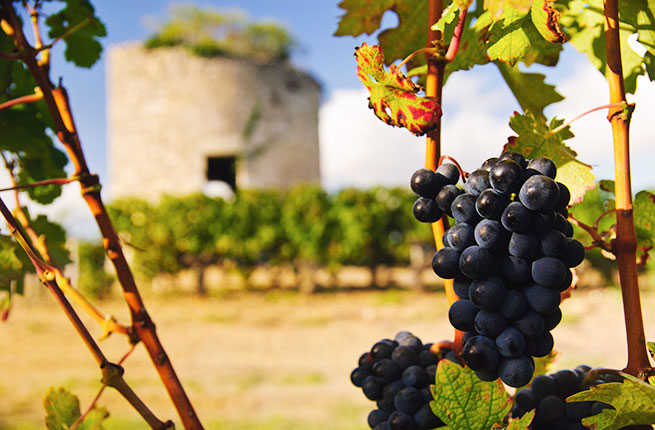
Bordeaux
France’s Renaissance City beckons wine lovers and history buffs alike.
With glorious architecture, a rich cultural heritage, and a world-class wine and food scene, it’s no surprise that Bordeaux has recently started to give Paris a run for its money as France’s tourism hot spot. In the last 15 years, the city has poured millions of Euros into getting its luster back, giving its neoclassical facades a serious spruce-up, creating large pedestrian-only swaths of street crisscrossing the city, and investing in state-of-the-art transport. Graced with a resplendent 18th-century historic center—the world's largest urban area to be designated a UNESCO World Heritage site—Bordeaux's spectacular Place de la Bourse and Grand Théâtre make an elegant backdrop for a slew of sleek new contemporary buildings. Most notable is the recently opened Cité du Vin, a sprawling glass and steel structure hovering like a spaceship over the banks of the Garonne River; it’s a high-tech romp through the history of wine and wine-making that many are calling the world’s first wine theme park.
Where to Stay: Restaurant-hotel La Grande Maison has taken center stage for both its opulent rooms and its scintillating menu. Set in a stunning 18th-century mansion, the dining room recently came under the helm of chef Pierre Gagnaire (voted World's Best Chef in 2015) and its six guest rooms are half the price of a similar room in Paris.
Insider Tip: Set to open in 2017, a new high-speed TGV train line will cut the 3 hour and 15 minute trip from Paris down to two hours, making it just a hop, skip, and a jump from the capital.
When to Go: There's no bad time to visit Bordeaux, but May and June, when the weather is mild and the tourist hordes haven't yet descended, are ideal. Harvest time—from mid-September through October—are also spectacular, as the cultural scene comes roaring to life and the vineyards surrounding the city are sheathed in gold.
PLAN YOUR TRIP: Visit Fodor’s Bordeaux Guide
—Jennifer Ladonne
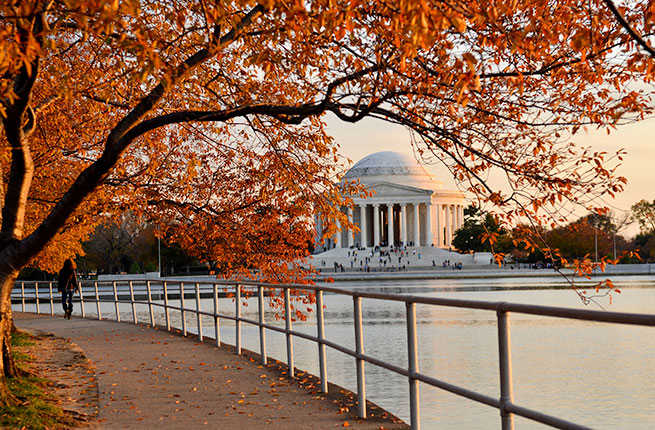
Washington DC
America’s capital city hurtles up the world trendiness barometer.
Who could have predicted that the nation’s capital, long a somber repository of marble monuments and the hallowed halls of government, would ever be deemed trendy and, gasp, even hip? But today the city bristles with edginess, innovative restaurants with Michelin stars, cool neighborhoods, an experimental theater scene, avant-garde art galleries, and intimate concert venues. It started slowly but surely nearly 20 years ago, with the Penn Quarter bringing new life around the Verizon Center. Soon after, trendiness moved to the U Street Corridor, then 14th Street NW, then H Street NE, and now the Yards and Union Market and Shaw and NoMa and Columbia Heights, and . . . well, you get the picture. The world is taking notice of Washington, D.C.—and these days, it happily goes above and beyond the political stage.
Where to Stay: The Kimpton brand is making a stake in the nation’s capital, offering home-away-from-home digs in some of the city’s buzziest neighborhoods, including the new Mason & Rook and Glover Park. For something more traditional, the Tabard Inn occupies three former Victorian town houses with 40 individually decorated rooms (it’s also one of the best deals in town).
Insider Tip: The Smithsonian’s National Museum of African American History and Culture opened recently on the National Mall with much fanfare; tickets are free, but timed passes are booked months into the future. Be sure to book online before you visit.
When to Go: The cherry blossoms in springtime are, of course, an enormous draw (though crowds can be a bit much). In fall, you’re virtually guaranteed beautiful weather, changing leaves, and fewer crowds. Summers are stifling hot but filled with lots of fun festivals. Winter is cold, but a good time to visit all the free museums.
PLAN YOUR TRIP: Visit Fodor’s Washington, D.C. guide
—Barbara Noe Kennedy
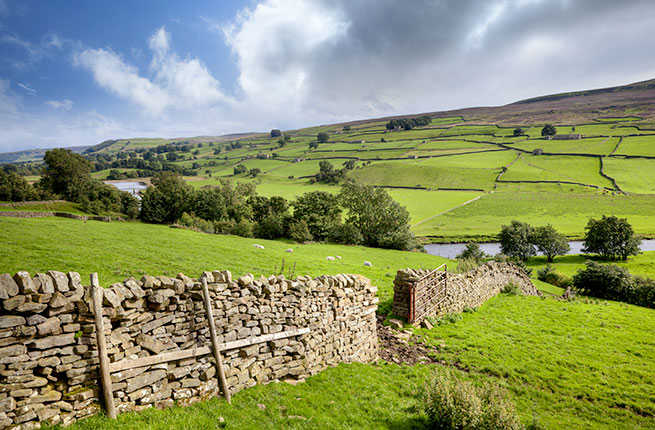
Yorkshire
This county in northern England offers scenic landscapes, historic cities, picturesque villages, and literary pilgrimages.
Yorkshire, the largest of England’s counties, is also one of its most romantic, offering windswept moors, charming market towns, historic stately homes, and brooding ruins. At its heart is the beautifully preserved city of York, still retaining its medieval walls and streets and home to the towering cathedral of York Minster, the largest Gothic building in Northern Europe, and the National Railway Museum. Vanbrugh’s Baroque masterpiece Castle Howard (immortalized in the film and television versions of Brideshead Revisited) is a day trip from the city.
But much of Yorkshire’s appeal lies in its great outdoors, from the rugged expanses of the North York Moors, where you’ll find the dramatic ruins of Rievaulx Abbey, to craggy fishing villages like Robin Hood’s Bay that cling like barnacles to the cliffs above the North Sea coast. The moors and rocky crags of the West Yorkshire Pennines provided the setting for Wuthering Heights and the family home of its author, Emily Brontë, has been turned into a museum of all things Brontë in the nearby gray stone village of Haworth, while the Yorkshire Dales National Park offers lush green valleys, white limestone cliffs, breathtaking waterfalls, and quaint villages.
Where to Stay: Just a 15-minute cab ride south from York, Middlethorpe Hall & Spa has 22 acres of grounds incorporating a series of lovely walled gardens. The hotel itself is a splendidly restored 17th-century manor house with oak-paneled walls, four-poster beds, and window seats. Even more bucolic is Swinton Park, a luxury hotel situated in an 18th-century castle complete with battlements, a tower, and a turret located on 20,000 acres bordering the Yorkshire Dales National Park.
Insider Tip: Take an old-school steam-powered train on the 18-mile long, volunteer-run North Yorkshire Moors Railway line to explore towns and moorland. Some trains go as far as Whitby on the coast, home to St. Mary’s, a hilltop Norman church which inspired Bram Stoker to write Dracula, and, perhaps not unrelatedly, to a twice-yearly Goth music festival.
When to Go: The heather on the moors is at its height during the summer, but so are the tourists. Spring and fall bring crisp, clear days (though with an increased risk of rain and mist) and smaller crowds. Snow and storms may make travel tricky during the winter.
PLAN YOUR TRIP: Visit Fodor’s Yorkshire Travel Guide
—Ellin Stein
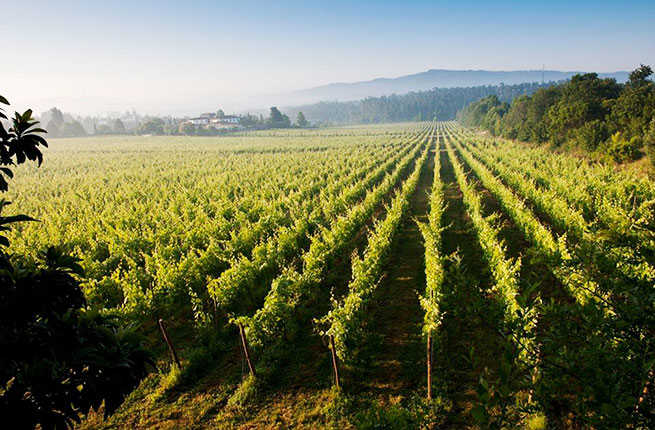
Vinho Verde
This rolling northwestern province is known for its crisp, slightly effervescent wines—the famous vinho verde—along with lush green landscape and historic towns.
Tourism in Portugal has soared in the last two years as word has spread about its alluring combination of gorgeous beaches, astonishingly diverse landscape, affordable prices, and delicious food and wine. But while visitors flock to the sunny capital Lisbon and the beach towns of the Algarve, the Portuguese often cite the lesser-known Minho region as the most beautiful part of the country.
Largely overlooked by foreign visitors, Minho’s lush green landscape is characterized by forest-covered hills, deep river valleys, unspoiled sandy beaches, and pretty towns where life appears to have changed little over the centuries. It also takes in the unforgettable Parque Nacional Peneda-Gerês—Portugal’s only national park, where granite villages, rolling rivers, and Roman roads are scattered among thick oak forests inhabited by wild ponies, eagles, and prowling wolves.
This rolling northwestern province is known for its crisp, slightly effervescent wines—the famous vinho verde—and following the wine route is a wonderful way to see the region’s spectacular scenery while sampling its delicious wines; with a relatively low alcohol content, this young, fresh wine lends itself perfectly to leisurely afternoon sipping. Running from the river Minho to the Douro, the demarcated Vinho Verde wine region traverses this picture-perfect route, taking in some of the most historic towns and cities in Portugal—including Guimarães, the country’s first capital.
Where to Stay: Minho is notable for its grand manor houses, many of which have been converted into elegant pousadas (guest houses) and boutique hotels, often set among their own vineyards. Standouts include Casa dos Assentos, a rural property close to the scenic, central Minho town of Barcelos. Here, a historic former farm has been converted into a romantic hotel with gorgeous gardens complete with lemon trees, swimming pools, and a tennis court.
Insider Tip: Large numbers of pilgrims pass through on The Portuguese Way to Santiago—or Caminho de Santiago—on their way Santiago de Compostela in Spain. The trails provide great hiking opportunities, but note that many guest houses along the Camino can be busy with walkers, especially during the summer—book in advance.
When to Go: Minho owes its verdant landscape and remarkable biodiversity to its somewhat wet climate—in contrast to the consistently dry and sunny climate of southern Portugal. It’s generally warm and sunny from late June to early September, when many of the region’s liveliest festivals take place. October and November can also see plenty of sunny skies and pleasant temperatures, with much of the rainfall occurring in winter and spring, but rain is a possibility for much of the year.
PLAN YOUR TRIP: Visit Fodor’s Porto and the North Guide
—Lucy Bryson
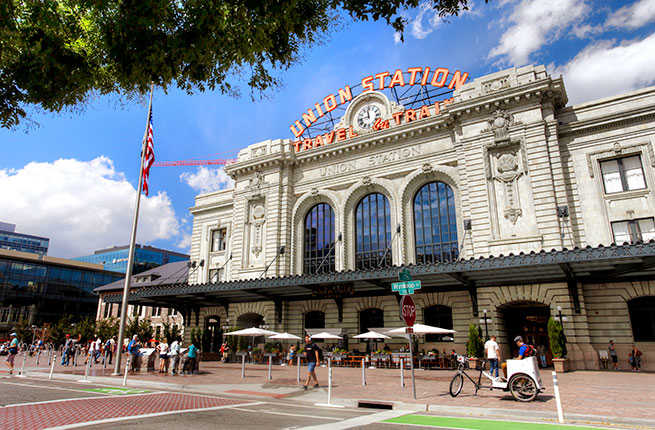
Denver
Cosmopolitan fun in the shadows of the Rocky Mountains.
Denver is often the entry point for visitors heading up the Colorado Rockies to get in some valuable ski time. The only problem is that many people’s experience of the Mile High City rarely goes beyond what they see through their rental car’s windshield. And it turns out they’re missing a lot. Over the past few years, the city has undergone an impressive food renaissance seen in the multitude of food halls and breweries that have opened up, including Avanti Food & Beverage and The Source, which is undergoing an expansion that will include a New Belgium brewery in early 2017. It’s also become the nation’s capital for recreational weed (giving new meaning to the phrase “Rocky Mountain High”). But it wouldn’t be a real visit to Denver without exploring the great outdoors. City Park makes it easy to get in touch with nature, with 314 rolling acres that include a public golf course, gardens, lakes, and the Denver Zoo. The city is also home to 85 miles of bike paths, which are easy to explore by taking advantage of Denver B-Cycle, the city’s bike-sharing program with 88 stations citywide. The new A Line train from the airport to downtown makes it even easier to get around—you won’t even miss having a car.
Where to Stay: The Crawford Hotel located inside Union Station, downtown’s revitalized epicenter, is conveniently located just steps from a variety of hip bars, restaurants, shops, and Coors Field, where the Colorado Rockies play. Equally convenient but at a fraction of the cost, Hostel Fish, a premium hostel, comes equipped with a full bar, the choice of several private rooms, and complimentary iPads.
Insider Tip: Before painters Mark Rothko and Jackson Pollock became the stars of Abstract Expressionism, there was Clyfford Still. See the world’s largest collection of his work at the Clyfford Still Museum. Afterward, reserve a table at Segretto, a super-secret restaurant within a restaurant at Bar Dough.
When to Go: Thanks to its arid climate and 300 days of sunshine, there’s really no bad time to visit Denver. However, if you’re looking to avoid the crowds, it’s best to skip visiting from June through August. Since Denver is a good hour or so drive from the ski resorts, winter is an ideal time to visit since rates are low, making it easy to spend a day or two in the city before trekking up the mountains.
PLAN YOUR TRIP: Visit Fodor’s Denver Travel Guide
—Jennifer Nalewicki
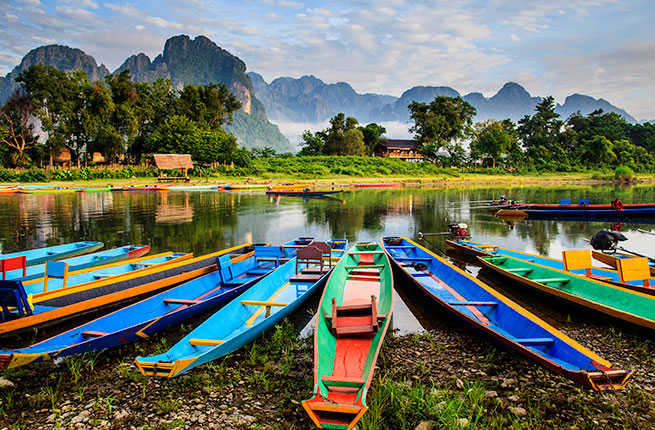
Laos
Less is more in Laos, where you’ll find wonderful historic sites throughout tiny towns and villages.
In urban centers Vientiane and Luang Prabang, a UNESCO World Heritage Site, Buddhist temples stand side by side with vestiges of French colonialism. The cities are the place to sightsee, shop, and eat. The pace of life is slow, and cycling along quiet back streets is a lovely way to get around. In Vientiane, gilded 3rd-century stupa Pha That Luang gleams in the sharp sunlight, as do the nearly 7,000 Buddha statues at Wat Sisaket Museum. In Luang Prabang, take in the impressive gilded carved wood at 16th-century Wat Xieng Thong before tucking into khao jie pâté on a scrumptious baguette. In both cities, give in to the urge to fill your suitcase with beautiful fair-trade textiles made by female artisans. Once you’ve had your fill of urban Laos, choose your own adventure: Will it be the mysterious Plain of Jars, 300-plus, 5-ton ancient stone and clay jars strewn across a wide expanse? Or will you head south to Si Phan Don and its 4,000 Mekong River islands for a glimpse of freshwater Irrawaddy dolphins?
Where to Stay: There are just 13 rooms at Apsara, a white French-style two-story boutique hotel overlooking the Khan River in Luang Prabang. For more expansive views over Luang Prabang, head just out of “downtown” to the ritzy Belmond La Résidence Phou Vao Hotel, atop Kite Hill. In the center of Vientiane and just a block from the river, rooms at Salana Boutique Hotel are decked out with fine Lao textiles; some rooms have temple views.
Insider Tip: If you want to follow in Barack Obama’s footsteps, pay a visit to COPE (Cooperative Orthotic & Prosthetic Enterprise), a nonprofit that provides orthotics, prosthetics, and therapy to Laotians across the country, many of whom were injured by unexploded landmines left from the Vietnam War. The exhibits and short films shown here provide insight into contemporary Laotian history you won’t find anywhere else; proceeds from the café and gift shop go to supporting COPE’s work.
When to Go: Dry season in Laos is November through May and wet season June through October. Visiting the cities is most comfortable November through February, when temperatures are in the low 80s F. Pollution in March and April due to crop burning can be problematic for those with respiratory problems. Rainy season has its upsides: the countryside is verdant, it’s less crowded, and rain showers tend to come in torrential bursts, rather than a downpour all day.
PLAN YOUR TRIP: Visit Fodor’s Laos Guide
—Sophie Friedman
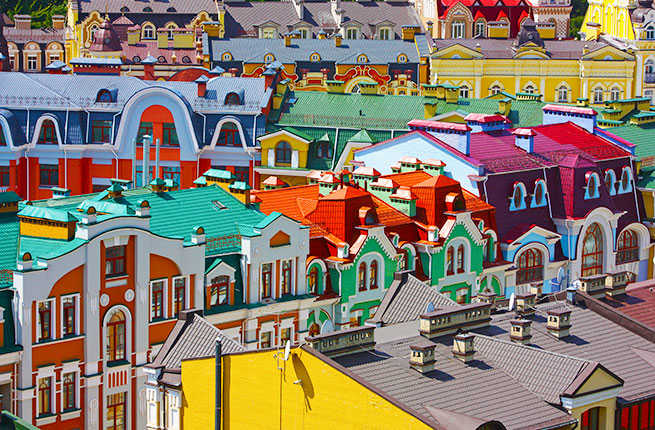
Kiev
Ukraine’s capital is a mix of ancient monuments and Soviet heritage, aspiring to a brighter future in the Western world.
To many Westerners, Kiev is an “exotic” enough destination, and although it may seem to lie at the fringes of Europe, it is a truly European city. Kiev is a unique mix of ancient monasteries, monumental Communist-era buildings, and history that continues writing itself as we speak.
The list of Kiev’s attractions is long. Any itinerary must include 11th-century Eastern Orthodox Monastery of the Caves with its gilded domes and underground catacombs. Nearby, in contrast, visitors should check out the Motherland Monument, a Soviet war memorial of mammoth dimensions. Pinchuk Art Centre, the largest private contemporary art museum in Eastern Europe, is a 21st-century affair.
In May 2017, Kiev will host the Eurovision Song Contest, following Ukrainian singer Jamala’s victory in 2016. The contest will be held at the International Exhibition Centre, culminating on May 9–13.
Where to Stay: Fairmont Grand Hotel in the Podil district, overlooking the majestic Dnipro River, is furnished with classic elegance from top to bottom—that is to say, from shiny chandeliers to thick plush carpets. The tongue-twisting Vozdvyzhensky Boutique Hotel is a more economical option. This friendly and cozy establishment is also close to many attractions, in the area sometimes referred to as “Kiev’s Montmartre.”
Insider Tip: Besarabsky Bazaar at the end of Khreshchatyk Street is a colorful covered market where you can buy caviar and spices, or pop in to marvel at the vivid fruit and flower arrangements.
When to Go: The best times to go are May–June or September–October, when temperatures tend to be pleasant. Summer can be hot and humid, and winters get very cold—expect snow, ice and frost.
PLAN YOUR TRIP: Visit Fodor’s Ukraine Travel Guide
—Dorota Wąsik
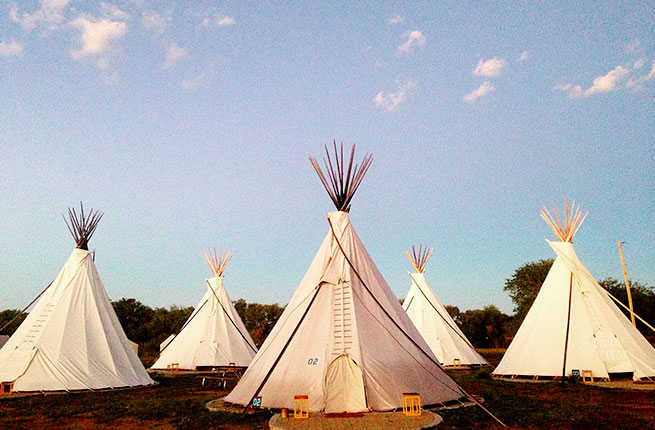
Marfa
Stunning landscapes and avant-garde art in the Wild West.
This small town—steeped in both history and contemporary art—has been steadily gaining notoriety. The Chinati Foundation, founded by sculptor Donald Judd, put Marfa on the modern art map when it opened in 1986; today, downtown boasts a thriving gallery scene anchored by Ballroom Marfa (which also oversees Prada Marfa) and Marfa Contemporary, both of which host exhibitions of cutting-edge work by an international roster of artists. But Marfa isn’t just about the art; it’s also an ideal base for exploring the Texas borderlands. About an hour’s drive south, the Fort Leaton State Historic Site sits at the entrance to the vast Big Bend Ranch State Park, whose dramatic landscape easily rivals the more famous national park to the east, but has far fewer tourists. After a day of driving or gallery-hopping, visitors have their choice of stylish accommodations for every budget, and dining experiences ranging from food trucks to rustic upscale restaurants like Stellina.
Where to Stay: The two most upscale options are downtown on Highland St.: the historic Hotel Paisano (where Elizabeth Taylor, James Dean, and Rock Hudson stayed while filming the 1956 classic Giant) and the sleek, modern Hotel Saint George. More retro-chic accommodations sit slightly outside of downtown, at the Thunderbird Hotel; and visitors with a sense of adventure will enjoy the well-appointed safari tents, teepees, and Airstream trailers at El Cosmico.
Insider Tip: Don’t miss the mysterious Marfa Lights; some believe they’re due to paranormal activity, while pragmatists say it’s just car headlights reflecting off heatwaves rising through the cool desert night air. Believers and skeptics gather nightly at the Marfa Lights Viewing Area 9 miles east of town to marvel, argue, or simply gaze up at the Milky Way.
When to Go: Visit during spring or fall for milder temperatures; summer can be unbearably hot and occasionally stormy. Popular events include the Trans-Pecos Festival in September and the Chinati Weekend in October.
PLAN YOUR TRIP: Visit Fodor’s Texas Guide
—Jennifer DePrima
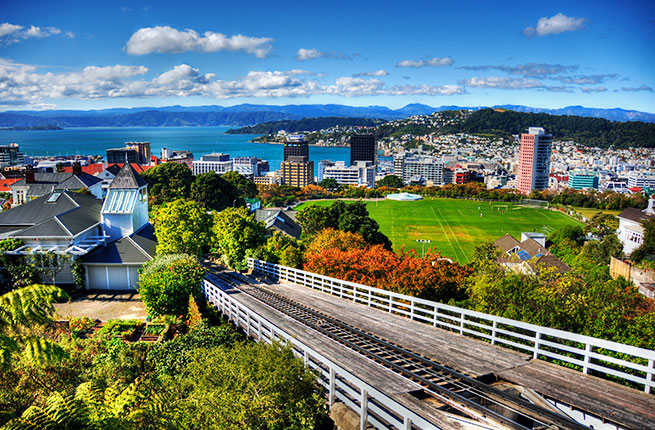
Wellington
More than a gateway to the South Island, New Zealand’s capital is packed with museums, art galleries, and festivals.
New Zealand’s artistic side is often overlooked in favor of its dramatic landscapes and extreme sports. But if you’re looking to inject some culture into a Kiwi holiday, plan to spend a few days in the capital city of Wellington, which is getting plenty of buzz right now. “Welly” is the epicenter of New Zealand’s film industry thanks to the Hobbit and Lord of the Rings franchise, earning it the nickname Wellywood. But a creative vibe permeates the entire city, from the concept store Good as Gold to single-origin bean coffee shops such as Memphis Belle. Welly is home to big cultural institutions such as Te Papa, the national museum of New Zealand, as well as the State Opera, the New Zealand Symphony Orchestra, and several theaters. But art is also happening on a smaller scale thanks to City Gallery Wellington, which focuses on contemporary works, and Enjoy, an artist-run public gallery. And foodies can rejoice, as Wellington is a culinary hot spot with a thriving artisanal coffee, craft brew, and cocktail scene. Do like the locals do and order a flat white and avocado on toast topped with harissa at Flight Coffee’s The Hangar. If beer is more your style, head to the Garage Project, or catch live music at the dog-friendly Rogue & Vagabond.
Where to Stay: Located right across from Te Papa, The Museum Art Hotel is home to more than 150 pieces of contemporary New Zealand art. The décor is dark and sexy. Enjoy a Sidecar crafted from apricot-infused brandy and maple syrup in the whimsical Hippopotamus Restaurant.
Insider Tip: Hang out on Cuba Street, which is packed with cafés and boutiques, as well as artists and street performers. Tuck into beer-battered fish tacos at Fidel’s or catch a live show at the Matterhorn. If you want a brief escape from the city, head to Otari-Wilton’s Bush, a wildlife sanctuary just a short drive from downtown.
When to Go: The warmest time to visit is December through March, but be aware that Wellington has infamously unpredictable weather. If you love festivals, time your visit to the World of WearableArt, a design competition held in the autumn. Or eat your way through the city during Visa Wellington on a Plate, held in June.
PLAN YOUR TRIP: Visit Fodor’s New Zealand Guide
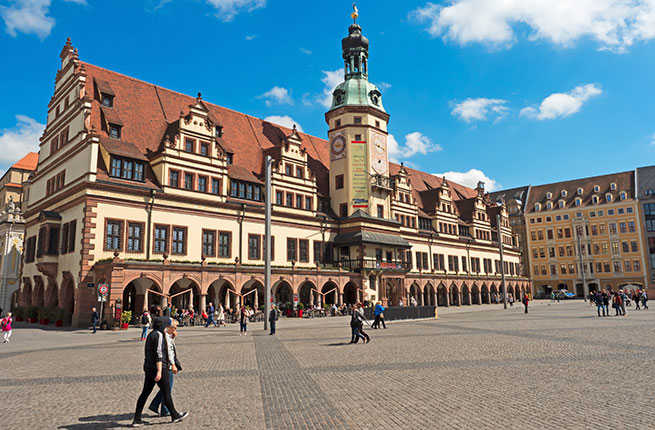
Saxony
Brimming with culture, this eastern German state is also the motherland of Martin Luther's Reformation, which turns 500 in 2017.
Conveniently set halfway between Berlin and Prague, Saxony has undergone a profound transformation in the quarter century since German reunification and has now returned to its rightful place as one of the country's most important cultural centers. Its capital, Dresden, is home to half a million people and splendid state museums like the Old Masters Picture Gallery (which houses such masterpieces as Raphael's Sistine Madonna), with collections dating from Saxony's medieval heyday as an electorate of the Holy Roman Empire. The Baroque Semperoper, one of the world's best opera houses, is another highlight in Dresden, a city that literally rose from the ashes after being leveled in the waning days of World War II.
Saxony's other major city, the slightly larger Leipzig, was the home base for 18th-century composer Johann Sebastian Bach, and in more recent times the site of the Monday demonstrations that laid the groundwork for German reunification. Today, Leipzig is also the scene of a hip and thriving young arts community, leading some to dub it “the next Berlin.” The upcoming year will see statewide celebrations as Martin Luther's Protestant Reformation turns 500, having kicked off in the town of Wittenberg in 1517 when Luther nailed his famous theses to the door of the castle church. The nearby gorgeous Renaissance town of Torgau eventually became the Reformation's political center.
Where to Stay: Dresden's five-star Hotel Suitess evokes Saxony's grand history and is centrally situated right next to the city's iconic Frauenkirche. Set behind the facade of a historic merchant house in Leipzig's old town, the upscale chic Hotel Fregehaus has 20 rooms set around a quiet courtyard.
Insider Tip: Saxony makes the perfect add-on to a Berlin and Prague trip, with Dresden located virtually halfway between the two, at about 100 miles (or two hours by train) from each. A €23 Sachsen-Ticket allows for unlimited train travel for one day throughout Saxony, as well as its next-door states of Saxony-Anhalt and Thuringia.
When to Go: May to October are the best months for a visit, with generally mild summers flanked by lovely late spring and early fall seasons. Leipzig celebrates its Stadtfest (city festival) in June, while Dresden's is in August. Winters tend to be cloudy, dark, and cold, with snow fairly common.
PLAN YOUR TRIP: Visit Fodor’s Saxony, Saxony-Anhalt, and Thuringia Guide
—Dan Allen
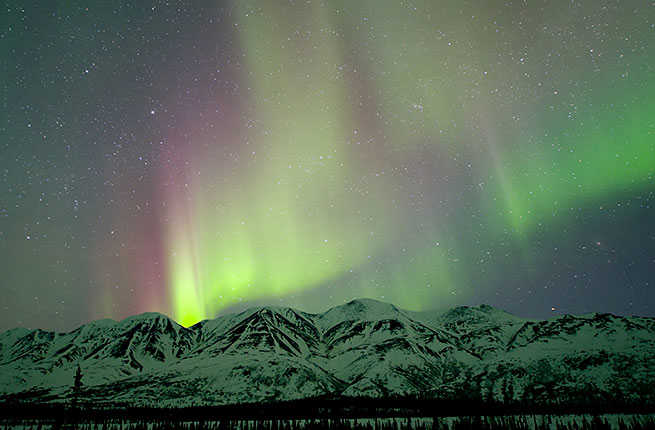
Alaska
Alaska celebrates two historic anniversaries in 2017.
Alaska is celebrating two major anniversaries in 2017—first and foremost is Denali National Park and Preserve’s Centennial. Denali turns the big 100 on February 26, 2017, and will start its celebration over the winter, but wait until summer to hike, flightsee, and shuttle bus into the 6 million-acre wilderness, home of the continent’s tallest mountain. The summer will see special events, guided ranger tours, and other festivities.
The second anniversary commemorates the sesquicentennial of Alaska’s transfer from Russia to the United States. The hand-off happened on October 18, 1867, known as Alaska Day, in Sitka. Along the Inside Passage, and a stop on many Alaska cruises, Sitka is replete with Russian and Alaska Native history. Start a tour at Castle Hill, where Alaska was formally handed over to the U.S., then visit Russian Orthodox St. Michael’s Cathedral, see precious Alaska Native art at Sheldon Jackson Museum, and gaze at the awesome totems on the famed Totem Trail in Sitka National Historical Park. There will also be music and community events to commemorate the anniversary.
Where to Stay: Cruises along the Inside Passage allow you to visit Sitka without booking a hotel; many cruises include a land tour of Denali. If you prefer to plan the trip yourself, stay in Denali at Camp Denali and North Face Lodge, an in-park lodge with a spectacular view of the mountain, or EarthSong Lodge in Healy, 17 miles away from the park. In Sitka, in-town lodging is available at the Westmark Sitka.
Insider Tip: With the midnight sun in full effect in the summer, you'll likely need surprisingly little sleep, which means more time to enjoy the amazing sights Alaska has to offer.
When to Go: Summer is the best time to visit for warm temperatures and to avoid seasonal closures, and that’s especially true this year as SummerFest kicks off on June 10 to celebrate Denali’s centennial with music and kids’ activities. April 5–16 and 22–23 are free weekends in the National Parks. Sitka will come to life beginning March 30, for Seward’s Day. If you decide to brave Alaska's icy temperatures in the winter, you might get to see the northern lights. Prime viewing time is between September and March.
PLAN YOUR TRIP: Visit Fodor’s Alaska Guide
—Salwa Jabado
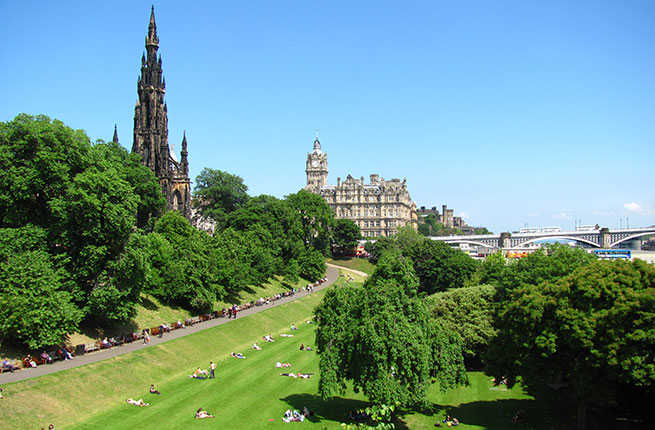
Edinburgh
It’s more than bagpipes, tartan, whisky, and the arts; visitors can experience all of Scotland in this ancient, compact city.
Scotland’s historic capital has an affectionate nickname–Auld Reekie—that reveals the city’s split personality. Inhabited for more than 1,000 years, the Old Town and its smoke and smell grew unbearable in the 18th century, driving many well-heeled residents to flee and build a tidy, neoclassical New Town across the valley that became Princes Street Gardens. The split, which ultimately brought World Heritage status, is readily apparent: rough-hewn poet Robert Burns versus genteel novelist Sir Walter Scott; rowdy local pubs next door to dainty tea rooms; ragged cliffs above architectural grandeur; developers battling conservationists.
To unpack this fascinating complexity, Edinburgh can, and should, be explored on foot. A walk along the ramparts of Edinburgh Castle, atop its extinct volcano, offers a striking panorama of the city. To the east, the Old Town sprawls along the Royal Mile toward Holyrood Palace, past the ultra-modern Scottish parliament. A view to the north reveals enticing glimpses of the New Town and its shopping and dining pleasures. To the south, another extinct volcano forms Arthur’s Seat, a mini-mountain that offers visual rewards to those who brave the windy heights. Explore past the spectacular vistas into the city’s interiors, the art galleries, theaters, centuries-old gathering places, restaurants and drinking establishments. The city’s love affair with the arts intensified 70 years ago when the Edinburgh International Festival was born. It draws hundreds of thousands of art lovers each August, but visitors can find much to occupy them all year round: literary, history, food, and pub tours are available in both Old and New Towns.
Where to Stay: The city center offers a rich abundance of lodgings, whether you desire deluxe linens, wood paneled rooms, pampering spa and spectacular views at The Scotsman; a holiday flat tucked into an ancient stone building on West Bow, with a four-poster bed, two fireplaces, and two living rooms; or the comfortable price and friendly atmosphere of hostels like Castle Rock, there’s something for everyone.
Insider Tip: Download the World Heritage site app with four city tours, maps, photos, and audio clips that focus on history, art, architecture, and food. On Saturdays, the Edinburgh Farmers Market sets up beneath the castle, offering organic local meats, cheeses, and baked goods. If it’s country dancing and bagpipes you want, you can join a traditional Ceilidh every week in a stunning vault-ceilinged hall near the castle.
When to Go: Summer is busiest, as long days and mild temperatures attract throngs to the Festival and Fringe. New Year’s Eve celebrations are huge despite sometimes freezing conditions, bringing thousands into the city center for an intoxicating mix of booze and music. If you’d rather explore the city without the crowds, choose the milder spring and autumn seasons. But remember, Edinburgh weather is always changeable. Wear layers.
PLAN YOUR TRIP: Visit Fodor’s Guide to Edinburgh
—Jennifer Greenhill-Taylor

Oaxaca
Culture, cuisine, and creativity in the heart of Mexico.
With its well-deserved UNESCO World Heritage designation, the city of Oaxaca—also the capital of the eponymous state—is a rewarding place to dive deep into Mexican culture. You could spend days exploring streets lined with dramatic Spanish baroque architecture and enjoying the sensory delights of food markets like 20 de Noviembre. Make time to savor regional culinary delights, including corn tamales and giant tlayuda tortillas piled high with cheese, beans, and salsa. Only about an hour away lies the state’s most important archeological site: the strikingly scenic Monte Alban, which once served as the capital of the Zapoteca Empire. Textile tours organized by operators like Tia Stephanie Tours are an ideal way to learn about the region’s rich craft-making heritage.
Where to Stay: Hotels in Oaxaca tend toward the smaller, independent variety, and several have true local character. Guests can experience a traditional temazcal steam bath at Hacienda los Laureles, a member of Mexico Boutique Hotels, which is set on a 19th-century hacienda among verdant woodlands. In historic downtown Oaxaca, Parador San Miguel is set partially in a centuries-old home, with handcrafted bedspreads and furnishings, as well as a rooftop deck that’s perfect for relaxing.
Insider Tip: Various annual events provide lively introductions to Oaxacan traditions. Consider a visit during the Guelaguetza dance festival in July, the Day of the Dead ceremonies in November, or Night of the Radishes, a bizarre (but fun) Christmas celebration that involves giant carved radishes.
When to Go: Temperatures are most pleasant between October and May; colder weather dominates from December through February, and travelers may find larger crowds and less hotel availability during major holidays including Christmas, New Year’s Eve, and Semana Santa, the holy week before Easter.
PLAN YOUR TRIP: Visit Fodor’s Oaxaca Guide
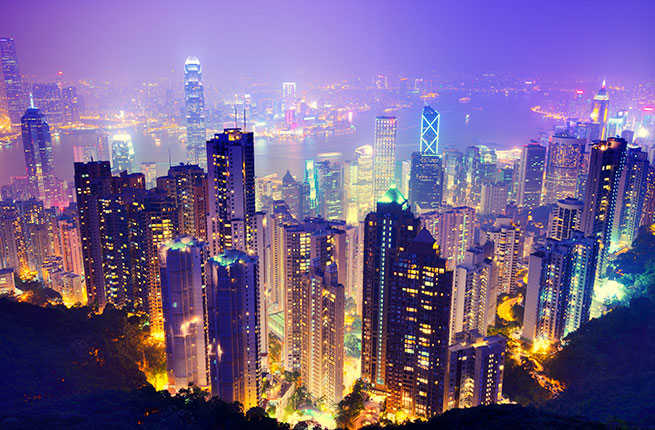
Hong Kong
The gateway to Asia is firmly on the international radar with its evolving art scene and iconic skyline.
Evolving at warp speed, Hong Kong has garnered much-deserved recognition the past few years with its rapidly growing art scene and lineup of international events. Hong Kong will once again be turning into Asia’s art destination this spring, when Art Basel Hong Kong sets up from March 23–25, 2017. At the same time, Hong Kong welcomes the third annual Art Central (March 21–25, 2017), and Asia Contemporary Art Show (March 17–20, 2017).
Of course, Hong Kong doesn’t need a momentous art month to cause a stir. The thriving city is constantly abuzz with fresh fashion, new shops, and avant-garde architecture. Travelers often comment on the east-meets-west, old-meets-new vibe—and there’s something to be said for the juxtaposition between shiny skyscrapers and ancient temples, bustling bird markets, and shimmering infinity pools.
You might come for the atmosphere, but you’ll stay for the food. Hong Kong is never short on fresh new restaurants, outdoor dai pai dong stalls, and retro cha chaan teng diners. Whether you’re dining on spare ribs and rice at Mido Cafe, handmade dumplings at Tim Ho Wan, or foie gras at Bibo, the city has a flavor for every palate.
Where to Stay: There’s something about Hong Kong that makes you want to indulge—and, luckily, there’s no shortage of options. Luxury meets spa-like serenity at The Upper House, a sexy address in the center of town with panoramic views from every room. The historic Mandarin Oriental is one of the most prestigious addresses in Hong Kong, as is the palatial Peninsula Hotel. Easier on the budget, Butterfly on Hollywood is located in the charming Sheung Wan neighborhood, full of boutiques, art galleries, and restaurants.
Insider Tip: There’s no reason to shell out for great views in Hong Kong, so skip the expensive paid platforms at Sky100 and Peak Tower. Instead, take in the views at bars like Felix, Aqua, Isola, or Ozone—the highest outdoor bar in the world on the 118th floor of The Ritz-Carlton Hong Kong. Better yet, get a front-row seat with a sunset cruise aboard the Dukling, a traditional Hong Kong junk boat with classic red sails, or hike the undulating green peaks of Dragon’s Back.
When to Go: The best time to visit Hong Kong is September through March, when temperatures range between 60 and 80 degrees. Avoid June through August when the city boils with 100-degree days and 95% humidity. The city tends to be quiet during public holidays, such as Chinese New Year, which in 2017 takes place January 28–31.
PLAN YOUR TRIP: Visit Fodor’s Hong Kong Guide
—Kate Springer
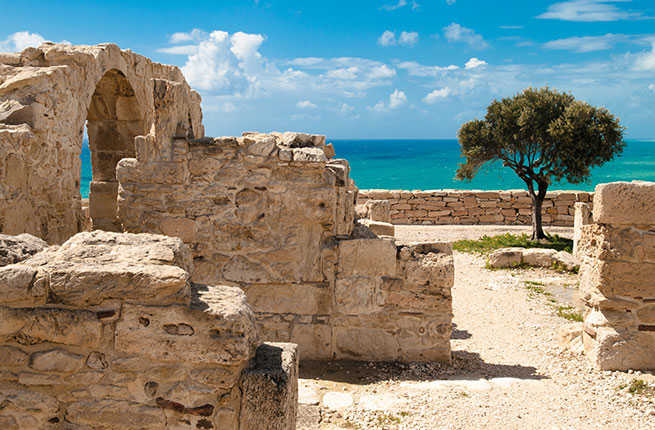
Cyprus
A sun-drenched island escape ideal for history buffs and gastronomists.
More than just a scenic beachside playground, Cyprus is also an eclectic meeting ground of culture, people, food, and history. Captivating throughout the year, there is something particularly compelling about visiting Cyprus once the fierce heat of summer has abated. Visits to Limassol and Paphos are a multifaceted archaeological experience with renowned historic sites like the Tomb of the Kings and Kourion among other ancient relics dotting the cities. The mosaic of Byzantine churches, Roman ruins, Phoenician tombs, and Islamic mosques across Cyprus emit a tangible sense of history. The island’s turbulent past has also made Cyprus a center for a deliciously culturally diverse cuisine. Food lovers will revel in authentic flavors heavily influenced by an infusion of Greek, Turkish, and Arabic gastronomy. Over the festive season, restaurants serve salty grilled halloumi, juicy kebabs, fatty sheftalia, or spicy loukaniko sausage along with sweet and decadent desserts flavored with rosewater and dripping with honey.
Where to Stay: A stay at Casale Panayiotis in the traditional mountain village of Kalopanayiotis is the epitome of contemporary rural living. This gorgeous agritourism retreat offers a tranquil respite from the daily stresses of life in a spectacular natural setting. You can also stay at the luxury Aphrodite Hills Hotel, Paphos, where you can tee off on its 18-hole championship golf course overlooking the dazzling Mediterranean Sea.
Insider Tip: As the weather cools, stroll through the winding narrow streets of Nicosia’s Old Town, where delicious aromas of roasting chestnuts linger on every corner, and where museums and centuries-old buildings can be discovered. During winter, indulge in some adrenaline-fueled skiing or snowboarding on the slopes of Mount Olympus in Troodos.
When to Go: Cyprus can be enjoyed throughout the year due to its mild winter from December to February and its long summer that begins middle of May and lasts until mid-October.
PLAN YOUR TRIP: Visit Fodor’s Cyprus Travel Guide
—Eleni Hoplaros
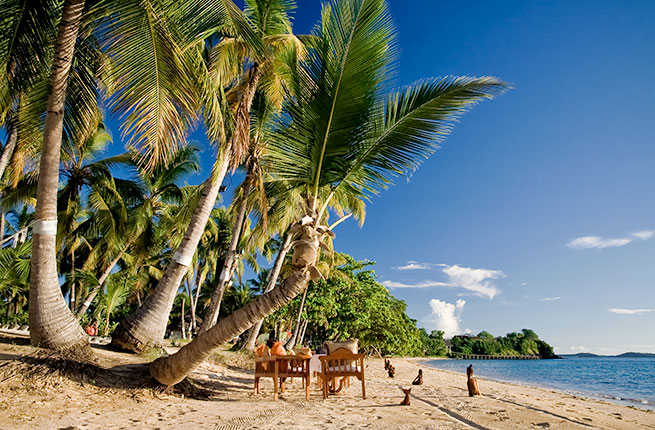
Madagascar
Go back millions of years and discover an ancient island where 80% of the fauna and flora exists nowhere else on earth.
Madagascar is a raw, wild, once-in-a-lifetime destination and a far cry from the touristy pampered princess islands of the Maldives, Seychelles, and Mauritius. Orphaned between Africa and India in the Indian Ocean when the giant continent of Gondwana broke apart 160 million years ago, Madagascar’s spectacular landscapes shift dramatically from desert to mountains, tropical forests to sandy beaches, coral reefs to sandstone canyons. It’s not always easy getting around, but well worth the effort and expense when you get to experience the wildlife, including more than 50 species of beguiling lemurs. Chameleons of all shapes and colors abound (the tiniest is the size of an ant), plus more than 100 endemic bird species. Marvel at the giant baobabs in the south and the ylang-ylang flowers (main ingredient of the most expensive perfumes) in the north. Experience some of the world’s best diving, deep-sea fishing, trekking, mountain biking, and unspoiled beaches while you feast on local seafood and sink into the local mora mora (softly, softly) time zone and let the real world fade away.
Where to Stay: French chic and local charm combine in Nosy Be’s classy but unpretentious Vanila Hotel & Spa. Chill out in lush tropical gardens, three pools, or an inviting sandy beach. Buy lovely handmade arts and crafts at the gift shop. Or splurge and treat yourself to an exclusive island stay at Constance Tsarabajina, two hours by boat from Nosy Be. Twenty-five thatch chalets nudge the ocean where tropical fish dazzle in the reefs and hawksbill turtles cruise the waves.
Insider Tip: Go wild and visit one of the island’s 10 parks and reserves managed by Madagascar National Parks, where rare wildlife and flora rule among very few visitors.
When to Go: The best time to visit is the dry season from May to October, although it’s still humid at the coast and in the forest. The island is also popular during Christmas, Easter, and summer vacation.
PLAN YOUR TRIP: Visit Fodor’s Madagascar Guide
—Kate Turkington

Aarhus
Denmark’s vibrant second city comes into its own as a 2017 European Capital of Culture.
Aarhus may be known as Copenhagen’s little sister, but the Danish city of 300,000 packs a big punch with new museums, cutting-edge architecture, a thriving food scene, and a vibrant student population that has spawned a hip café culture. Throughout 2017, Aarhus will celebrate its status as European Capital of Culture and European Region of Gastronomy. Must-see sights include Dokk1, a cool new cultural center on the inner harbor that includes Scandinavia’s largest new-school library; ARoS, one of Europe’s largest art museums, where visitors can walk in Icelandic artist Olafur Eliasson’s trippy Your panorama rainbow for a 360-degree view; and the Moesgaard Museum (home to 2,000-year-old Grauballe Man), a striking modern structure with a spectacular green roof. After a dose of culture, join the hipsters in Frederiksbjerg for a pint at microbrewery Mikkeller, or indulge in a meal at Michelin-starred restaurants Substans or Gastromé.
Where to Stay: For Scandinavian minimalist chic within easy walking distance of shops and cafés, the boutique Hotel Oasia fits the bill. Villa Provence oozes charm and romance, with cozy rooms and a courtyard garden, and is just minutes away from Dokk1. Hotel Royal is the Aarhus grande dame, a bit old-fashioned and over-the-top, but full of regal style.
Insider Tip: For even more art along with music, the annual Aarhus Festival runs from Aug. 25 to Sept. 3, with more than 1,000 events at 100 venues. It includes the Food Festival (Sept. 1–3), which lets visitors sample culinary treats from around the region—there’s even a hot dog contest, with traditional and modern versions.
When to Go: June through September are the nicest months to visit, with pleasant temperatures and lots of sunlight—usually until after 10 p.m. in June and July.
PLAN YOUR TRIP: Visit Fodor’s Jutland Guide
—Liz Humphreys
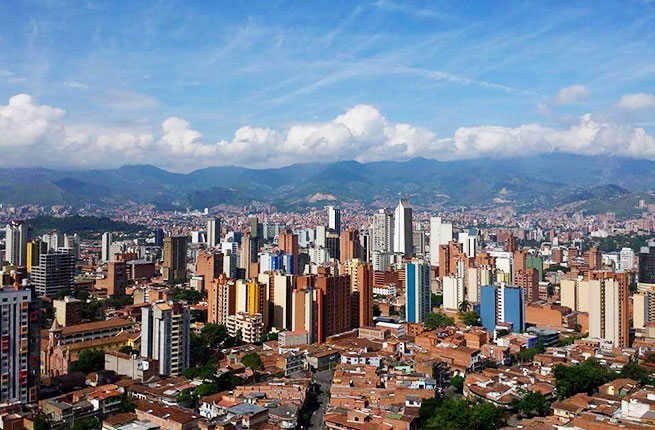
Medellin
Medellín is in an exciting renaissance, emerging as a vibrant locale full of innovation and creativity.
In the wake of a violent recent history in which it was dubbed the “most dangerous city on earth,” Medellín is emerging from its drug trafficking past as a vibrant locale full of innovation and creativity.
For a background on Colombia’s second-largest city’s past conflict, visit the Museo Casa de la Memoria for statistics, news reports, and personal accounts of victims. Then look to the arts, which play a major role in the city’s healing, from the historically informed graffiti in the former drug stronghold of Comuna 13 to museums like Medellín Museum of Modern Art (or MAMM), which holds a core collection of Colombian artists including works by transgressive Medellín-born master Débora Arango. There’s also the Plaza Botero, a community gathering place filled with the voluminous works of the Medellín-born sculptor. Visit the International Poetry Festival, once started in resistance and now one of the largest in the world. Or cut a rug at the techno Freedom Festival, which also has subversive roots (it started as a free party to restore peace) and now flourishes, attracting visitors for its big names in EDM.
Come for the textiles, as the city has emerged as a leading force in design with an annual design week, and stores like The Blue House and Makeno showcasing local artists. Stop by the bustling Calle 52 for trinkets, food carts, and hole-in-the-wall eateries. Or take advantage of the new social urbanism projects like the expansive science complex Parque Explora, the beautiful Jardín Botánico, or the impressively high-tech and high-flying Metrocables, implemented just over a decade ago as a means of public transportation connecting the barrios to downtown. It’s an exciting time for Medellín, and this is just the beginning.
Where to Stay: The chic Charlee hotel is across the street from Parque Lleras in the popular Poblado neighborhood, a top pick for lively bars, clubs, and restaurants. The hotel also houses a rooftop bar with a pool and stunning views.
Insider Tip: Take a day trip to Guatapé, a lake-filled paradise just 80 km away and dubbed the “Hamptons of Medellín.” Climb the 750 steps to the top of the Piedra de Penol, a 10-million-ton monolith once worshipped by the Tahamies Indians, take a boat right up to La Manuela, the lakeside mansion once belonging to Pablo Escobar, or visit the colorful Pueblo de Zocalos for souvenirs and food.
When to Go: Surrounded by lush mountains high above sea level, the year-round temperate weather means there’s no bad time to visit, though the city has several events in July and August—including the large Festival of the Flowers—that would make for a livelier vacation. Just remember to bring an umbrella: short bursts of rainfall are just a way of life.
PLAN YOUR TRIP: Visit Fodor’s Medellín Travel Guide
—Vanita Salisbury
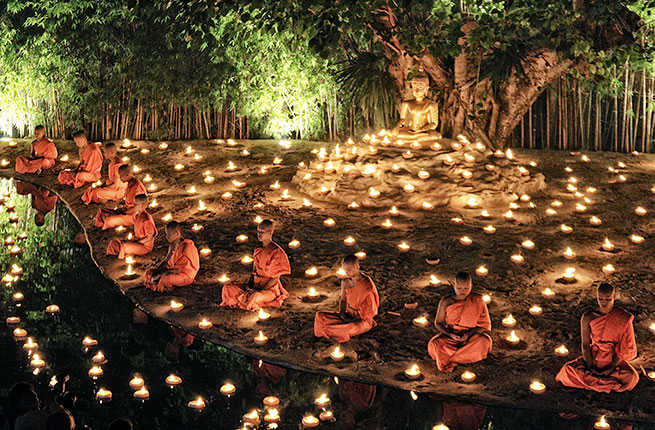
Chiang Mai
In this ancient northern city, you’ll find hill trekking, temple-hopping, and Thai food unlike anything you’ve tasted before.
Chiang Mai draws you in with its 720-year-old Old City—its original walls crumbling but still standing—and beckons you to stay by flaunting its emerald mountains and glassy waterfalls just outside the metropolis. Doi Inthanon National Park, named for Thailand’s tallest mountain, is wondrous. Myriad hiking trails lead you through beautiful, dense forests of green among the roar of some of the country’s highest waterfalls. For a photo op, stand in front of Siribhum Falls, which rush down from a 1,650-foot-high cliff. The Old City is just 1.5 sq km, easily traversed on foot or in the back of a tuk tuk, but is dotted with more than three dozen temples. You can’t go wrong at any, but for a chance to interact with monks in vivid saffron robes, pull up a seat at Wat Chedi Luang’s Monk Chat. This delightful form of cultural exchange leaves visitors with a better understanding of the daily life of a young Thai monk and the monks with a useful English lesson. Northern Thai food is a distant cousin to what you’ll find in the south. Forget pad Thai; in Chiang Mai, tuck into Burmese-influenced khao soi (a meat and noodle soup), gaeng hang lay (pork-based curry), and sai ua (grilled pork sausage bursting with fresh herbs). At Chiang Mai’s famous Night Bazaar, you’ll be able to sample local fare while browsing beautiful local crafts and textiles in hundreds of stalls and shops.
Where to Stay: On the outskirts of Chiang Mai is Dhara Dhevi, where ruddy holiday-makers sip cocktails overlooking the rice paddies and loosen up in the spa, a replica of the royal palace across the border in Mandalay, Myanmar. In the center of Chiang Mai’s Old City, surrounded by wat (Buddhist temples), is the smart but moderately priced Ninety Nine The Gallery Hotel.
Insider Tip: Some of Chiang Mai’s best eats are served from humble street stalls and in roadside eateries. Bottled water is always available, but a sink may not be; pack wet wipes, which do double duty in cooling your sweat-soaked forehead.
When to Go: November to February is dry season, hot by day but cooler at night, with low humidity. Note that the week of Chinese New Year (in January or February, depending on the lunar calendar) sees crowds and higher hotel prices. From March to June it’s hot and humid, and from July to October it’s monsoon season—though this means not rain all day but afternoon downpours. If you have respiratory problems, avoid March and April; pollution from crop burning is at its peak at this time.
PLAN YOUR TRIP: Visit Fodor’s Chiang Mai Guide
—Sophie Friedman

Canadian National Parks
Visit more than 200 exceptional places across Canada in 2017 free of charge.
This is the year to visit Canada and its stunning landscapes: 2017 marks the 150th anniversary of Canadian Confederation, and to celebrate, Parks Canada is offering free admission to national parks, historic sites, and marine conservation areas for the entire year. Canada’s great outdoors has it all, from mountains to prairies and everything in between. Whether you take a scenic road trip to spot bison and deer in the expansive Grasslands National Park in Saskatchewan, hike the world-famous (and picturesque) Cabot Trail in Nova Scotia or kayak up-close to Haida culture among the islands of Gwaii Haanas National Park Reserve in British Columbia, Canada does not disappoint.
Where to Stay: The lodging options in Canada’s national parks are just as varied as the country’s landscape. From camping, cabins, and yurts to an entire offering of unique places to lay your head: such as the micro-cube in Forillon National Park in Quebec, the cocoon tree bed in Cape Breton Highlands National Park in Nova Scotia, or the tiny home on wheels in Waterton Lakes National Park in Alberta.
Insider Tip: Be like a Canadian: snap a photo relaxing in one of the red Adirondack (Muskoka) chairs in national parks across the country. Post it on social media with the hashtag #ShareTheChair.
When to Go: Most national parks are all-season destinations: from hiking and kayaking in the summer to skiing and snowshoeing in the winter. The busiest months are July and August; spring and fall are also good times to visit when the crowds are smaller.
PLAN YOUR TRIP: Visit Fodor’s Canada Guide
—Jennifer Foden

Lima
A culinary wonderland in a South American cultural hub.
Travelers eager to taste the best the world has to offer need to make a pilgrimage to this metropolis currently in the midst of a golden age of dining. The restaurant scene in Peru’s capital city of Lima rivals destinations like Paris or Rome as relatively affordable standouts like Central, Maido, and Astrid y Gaston regularly take top spots on lists of the world’s best restaurants. For classic Peruvian ceviche, you can either head to a renowned restaurant like Gaston Acurias’s La Mar or join the locals at a stall in one of the mercados. Stick to the larger mercados like Surquillo Mercado Numero Uno, and look for the stalls drawing the biggest crowds. While there, be sure to hit the juice aisle for a fresh fruit smoothie.
If you need to walk off all those bountiful meals, Lima offers a wealth of cultural and sightseeing activities. On the oceanfront El Malecón, colorful gardens overlook an expanse of turquoise water dotted with surfers, and there is even a place to take wing over the ocean on a paraglider, no previous experience required. In Parque del Amor, vibrant mosaics inspired by Antoni Gaudí’s Park Güell in Barcelona feature spiraling quotes from romantic poetry. In the city center, at the Plaza de Armas, architectural delights include the Governor’s Palace, the Cathedral, and the exuberant Archbishop’s Palace. A tour of the massive Convento de San Francisco includes a visit to the labyrinthine catacombs piled with bones, as the congregation singing hymns in the chapels above provides an eerie soundtrack. Lima’s art scene impresses as well, from the contemporary artists spilling out of their studios to create murals over the walls of the Barranco district, to the established museums, including the bougainvillea-draped Museo Rafael Lorca, which has a stunning collection of pre-Columbian masterpieces, including impressive golden ensembles and a collection of erotic pottery occupying its own private set of rooms off the garden.
Where to Stay: Country Club Lima is an architectural gem of a grand hotel, with stellar service, colonial décor, an excellent restaurant (and the prices to match). Second Home Peru is a less expensive option where you’ll find comfortable rooms, lovely gardens, and ocean views.
Insider Tip: Don’t forget about Peru’s national drink—whether or not the pisco sour really entered the world in the bar of the Gran Hotel Bolivar in Lima’s Plaza San Martin, it’s still an excellent place to enjoy this classic cocktail.
When to Go: Lima has comfortable temperatures year-round, but you’ll find the warmest, sunniest days from January to March (during summer). June and July are cool, and the fall months (spring there) can be overcast. The change from summer to winter can be startling, with a pale gray fog sliding like a dome over the city literally overnight sometime in late April or early May, and staying put until November, when it disappears as abruptly as it arrived.
PLAN YOUR TRIP: Visit Fodor’s Lima Guide
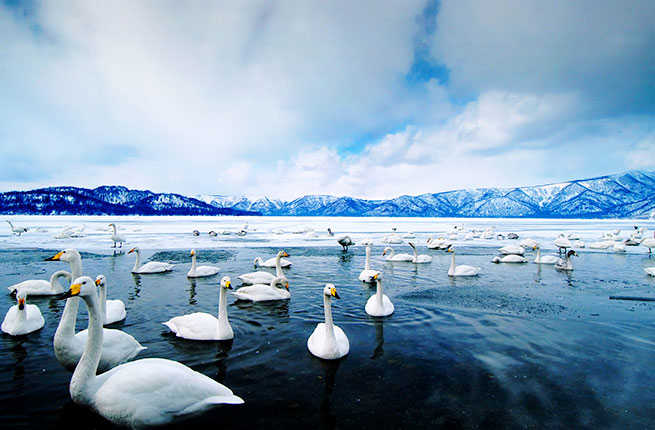
Hokkaido
From pristine forests and snowcapped mountains to breathtaking flower fields and plentiful hot springs, the natural splendor of Japan’s northernmost island is unparalleled.
There is an untamed, remote quality to the island of Hokkaido that needs to be experienced to be believed. Though it accounts for 20 percent of Japan’s landmass, its 5 million residents live in a handful of cities or scattered small towns, leaving much of the sprawling countryside empty and its forests unspoiled.
Perhaps the most famed aspect of Hokkaido’s natural offerings is its snow. Thanks to the abundance of powdery snow, the island has become a popular ski destination, with more than a dozen resorts, including the world-famous Niseko.
When it comes to food, you’ll find both the expected (ultra-fresh seafood, especially salmon roe, sea urchin, and horsehair crab) and the somewhat less expected (artisanal cheese has recently become very popular). However, if you want to try the signature dish of Hokkaido, order some jingisukan, or “Genghis Khan.” The meal consists of mutton or lamb cooked with vegetables on a special grill shaped like the helmet of the ancient Mongolian warrior.
Where to Stay: For luxury and location, you can’t beat The Windsor Hotel Toya, whose rooms provide guests with stunning lake views and direct access to the slopes. The hotel is conveniently located just 12 miles from Usuzanfunka Memorial Park, Oshamanbe Onsen, and Toyako Forest Museum.
For a more intimate lodging experience, consider the Iruka Hotel, where you’ll feast on dinners of fresh fish and the owner is qualified to take more adventurous guests diving under ice floes.
Insider Tip: If you’re looking for a unique location to take in the countryside, check out Naitai Kogen Farm, which offers a stupendous view of the Tokachi Plain and a serene locale for a relaxing walk. The soft-serve ice cream alone makes the trip worthwhile.
When to Go: As the coldest region in Japan, Hokkaido is the perfect place for a winter getaway. Spend your day at one of the island’s dozen of ski resorts followed by a tasting of Nikka Whiskey at the original 1934 distillery. If you visit in February you’ll be able to visit several winter festivals, including the Sapporo Snow Festival, and then soak in one of the region’s many onsen baths (hot springs).
If winter adventures are not to your taste, Hokkaido is beautiful in the summer thanks to the breathtaking flower fields of Furano and the pristine wilderness of Shiretoko National Park. In the fall, Hokkaido draws leaf peepers with vibrant fall foliage that rivals New England.
PLAN YOUR TRIP: Visit Fodor’s Hokkaido Guide
—Chantel Delulio
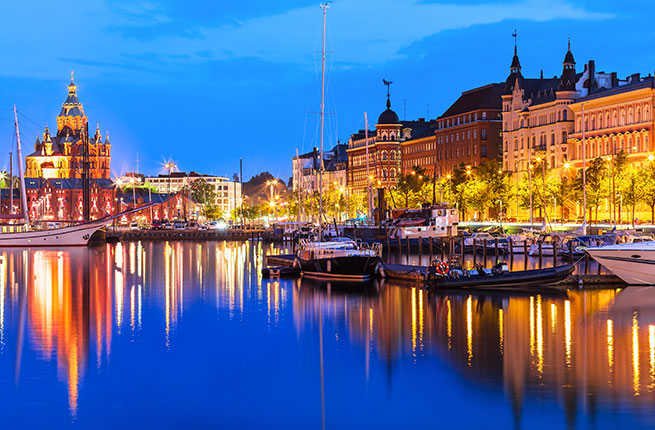
Helsinki
This design capital is the place to be for Finland’s centennial.
With 2017 marking the 100th anniversary of Finland’s independence, the clean, classy capital, Helsinki, is set to be Scandinavia’s place to be in the new year. Plenty of celebrations leading up to the actual December 6, 2017, anniversary are planned across Finland, too—from the lakes in the country’s forested south to the austere beauty of Lapland in the Arctic. Kicking the independence jubilee off will be a free New Year’s Eve party in Helsinki organized by the Finnish Broadcasting Company around Töölönlahti Bay and Kansalaistori Square. Things get going around noon on December 31 and explode at midnight with an enormous fireworks spectacular in blue and white, the colors of the country’s flag. Any time of the year, it’s a pleasure to explore the city’s high-design aesthetic (Helsinki was named the World Design Capital in 2012), thriving café and sauna culture, and the newly renovated Old Market Hall along the city’s revitalized waterfront.
Where to stay: Coming in summer 2017, the historic-made-modern St. George Hotel promises to be the hottest place to stay during the jubilee year.
Insider Tip: Less than 4 hours northeast of Helsinki, the Lake Saimaa region is a place of sublime forests and pristine natural beauty where Finns go for solace and, of course, sauna time. One of the most special places to stay is the lakefront Hotel & Spa Resort Järvisydän.
When to go: Summer brings the mildest weather and is also when you’ll find an abundance of centennial celebrations in Helsinki. But if you can brave the icy brace of winter, the Helsinki region is full of pleasures such as ice fishing, cross-country skiing, and Scandinavian coziness.
PLAN YOUR TRIP: Visit Fodor’s Helsinki Travel Guide
—Terry Ward
